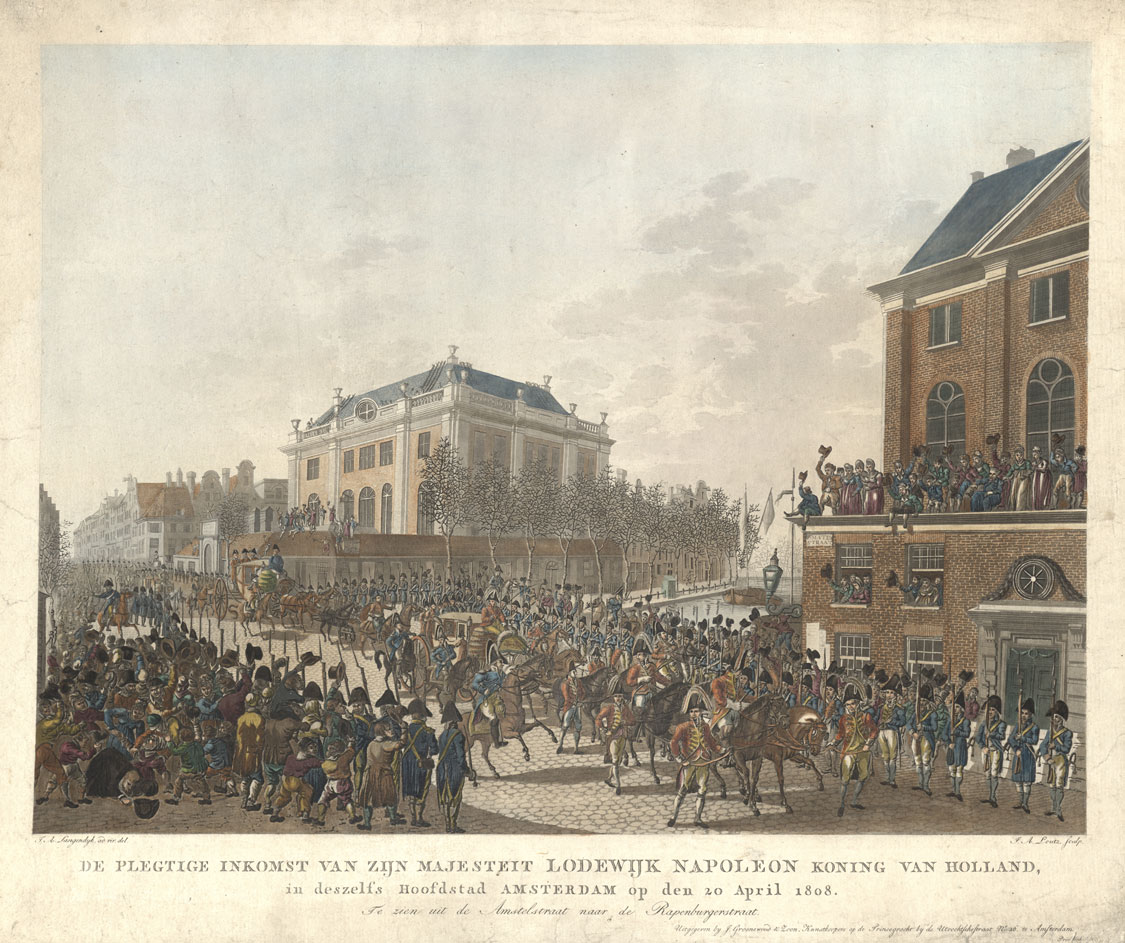The brother of French Emperor Napoleon I, King Louis Napoleon of Holland—whose reign extended from 1806 to 1810—is depicted here as he enters his capital city, Amsterdam. What makes this image especially significant is the location chosen for the view and the prominence given to the city’s two largest synagogues, in front of which the procession passes. The Ashkenazi Great Synagogue is on the right and the Portuguese Synagogue on the left. Between 1670 and 1675, the two brick structures, both designed by architect Elias Bouman, were built facing each other across the Houtgracht canal.
The Ashkenazi Great Synagogue was built near the former St. Anthony’s Gate on a site made available when the city expanded. The smaller, but wealthier, Sephardi community almost immediately followed suit to build a bigger synagogue and purchased a large piece of land on the Houtgracht on which St. Anthony’s Gate had once stood, directly opposite where the Great Synagogue was being built. These sites apparently were chosen because large lots were needed, but their location at the edge of town recalls those ancient and medieval European Jewish quarters set at the outer city limits. But as this print suggests, the new Jewish buildings were anything but peripheral to the life of Amsterdam.
The size, location, and elegance of the two structures expressed the prosperity and prestige the Jewish community had achieved in Amsterdam since the first Jewish settlement there around 1600. Both synagogues were tall and dominated the skyline of the surrounding Jewish neighborhood.
During the 1700s, three more Ashkenazi synagogues were constructed adjoining the Great Synagogue, creating a complex. The four synagogues now form the Jewish Historical Museum. The Portuguese Synagogue, however, continues its original function as a Jewish house of worship and community center.
